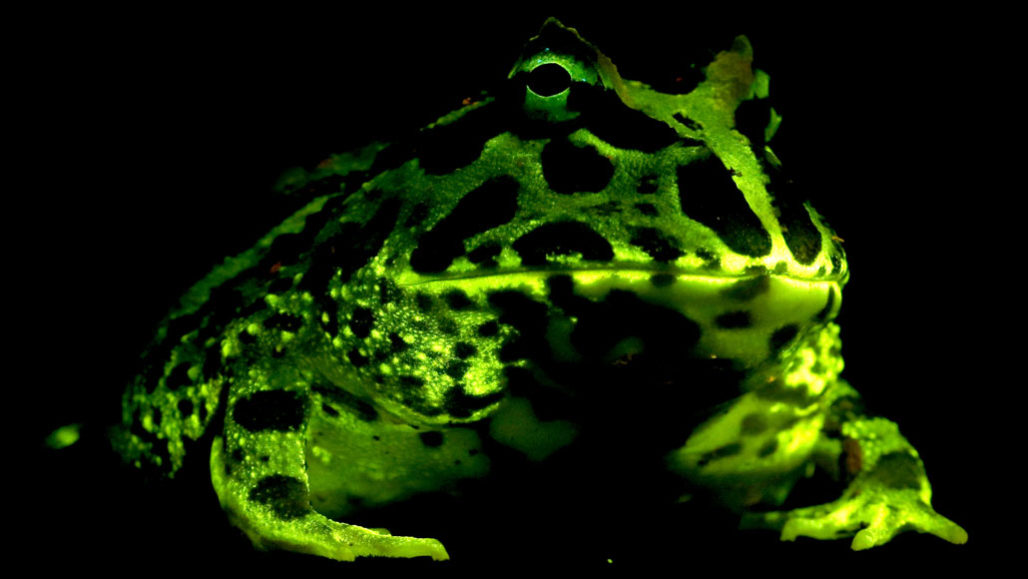amphibians: A group of animals that includes frogs, salamanders and caecilians. Amphibians have backbones and can breathe through their skin. Unlike reptiles, birds and mammals, unborn or unhatched amphibians do not develop in a special protective sac called an amniotic sac.
biofluorescence: The light emitted from a living organism. This light is not produced by a chemical reaction within the organism. Instead, some tissue in the organism absorbs light (energy) at one wavelength (color). This chemically excites molecules in that tissue. To relax, they release that energy at a different, lower-energy wavelength.
biologist: A scientist involved in the study of living things.
caecilian: A type of amphibian that has no legs. Caecilians have ring-shaped folds of skin called annuli, small eyes covered by skin and sometimes bone, and a pair of tentacles. Most of them live underground in the soil, but some spend their entire lives in water.
cell: The smallest structural and functional unit of an organism. Typically too small to see with the unaided eye, it consists of a watery fluid surrounded by a membrane or wall. Depending on their size, animals are made of anywhere from thousands to trillions of cells. Most organisms, such as yeasts, molds, bacteria and some algae, are composed of only one cell.
coral: Marine animals that often produce a hard and stony exoskeleton and tend to live on reefs (the exoskeletons of dead ancestor corals).
fluorescent: Adjective for something that is capable of absorbing and reemitting light. That reemitted light is known as fluorescence.
habitat: The area or natural environment in which an animal or plant normally lives, such as a desert, coral reef or freshwater lake. A habitat can be home to thousands of different species.
marine: Having to do with the ocean world or environment.
pigment: A material, like the natural colorings in skin, that alter the light reflected off of an object or transmitted through it. The overall color of a pigment typically depends on which wavelengths of visible light it absorbs and which ones it reflects. For example, a red pigment tends to reflect red wavelengths of light very well and typically absorbs other colors. Pigment also is the term for chemicals that manufacturers use to tint paint.
protein: A compound made from one or more long chains of amino acids. Proteins are an essential part of all living organisms. They form the basis of living cells, muscle and tissues; they also do the work inside of cells. Among the better-known, stand-alone proteins are the hemoglobin (in blood) and the antibodies (also in blood) that attempt to fight infections. Medicines frequently work by latching onto proteins.
species: A group of similar organisms capable of producing offspring that can survive and reproduce.
survey: To view, examine, measure or evaluate something, often land or broad aspects of a landscape.
trait: A characteristic feature of something. (in genetics) A quality or characteristic that can be inherited.
wavelength: The distance between one peak and the next in a series of waves, or the distance between one trough and the next. It’s also one of the “yardsticks” used to measure radiation. Visible light — which, like all electromagnetic radiation, travels in waves — includes wavelengths between about 380 nanometers (violet) and about 740 nanometers (red). Radiation with wavelengths shorter than visible light includes gamma rays, X-rays and ultraviolet light. Longer-wavelength radiation includes infrared light, microwaves and radio waves.








